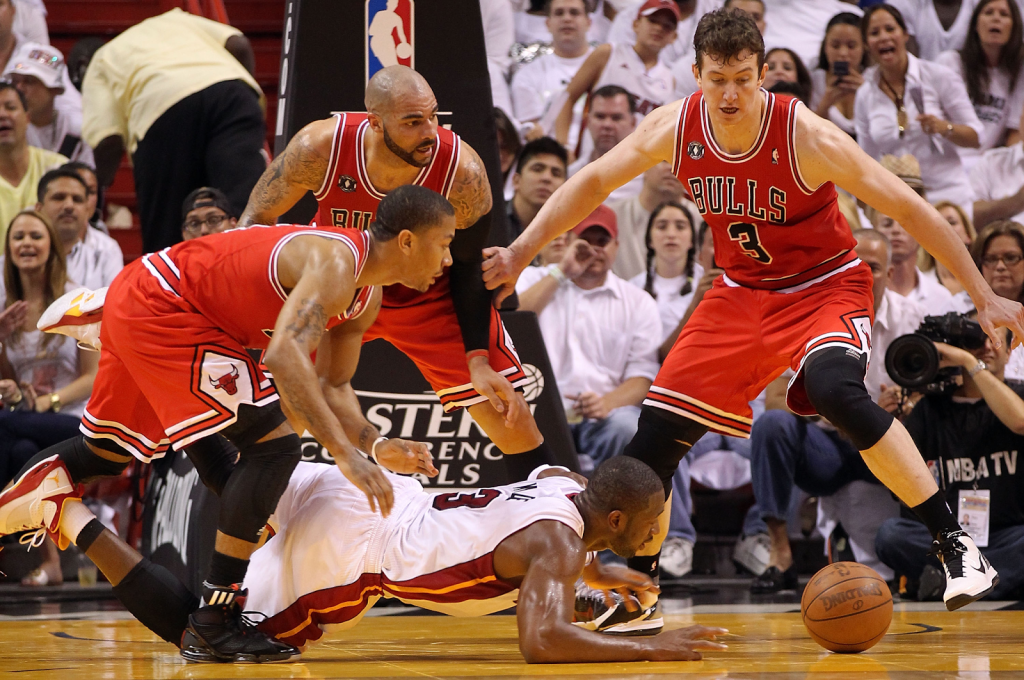What is a Turnover in Basketball
In basketball, a turnover refers to a situation where the team in possession of the ball loses it to the opposing team. This can happen for various reasons, such as a bad pass, a player stepping out of bounds, a player traveling with the ball, or a defensive player stealing the ball from an offensive player. Turnovers disrupt the offensive flow of the team with possession and give the opposing team a chance to gain control of the ball and transition to offense. Read about What is a Bank Shot in Basketball
Understanding Turnovers
Types of Turnovers
Turnovers come in different forms, each contributing to the ebb and flow of a match. The most common types include:
Also read the Article: What is a Charge in Basketball
- Bad Passes: When a player’s pass is intercepted by an opponent, it results in a turnover.
- Traveling: If a player moves both of their feet without dribbling the ball, it’s considered traveling and leads to a turnover.
- Carrying or Palming: A player is not allowed to place their hand underneath the ball while dribbling, and doing so results in a turnover.
- Stepping Out of Bounds: If a player steps out of the court’s boundaries, the ball is turned over to the other team.
- Shot Clock Violation: Failing to attempt a field goal within the designated time frame results in a turnover.
Causes of Turnovers
Turnovers can be caused by various factors, such as tight defense, pressure from opponents, or even fatigue. Additionally, miscommunication among teammates, especially during fast breaks, can lead to turnovers.
Importance of Turnovers
Changing Possession
A turnover essentially changes the possession of the ball from one team to another. This shift can have a significant impact, especially during close matches where every possession counts.
Momentum Shift
Turnovers are often accompanied by momentum shifts. When a team forces a turnover, the players and fans alike are energized. Conversely, the team committing the turnover may experience a dip in morale, which can affect their overall performance.
Statistics and Analysis
Tracking Turnovers
Basketball analytics heavily rely on turnover statistics. Teams and analysts track turnovers to assess player performance and identify patterns that can be exploited or corrected.
Analyzing Team Performance
High turnover rates can indicate poor ball-handling skills or decision-making within a team. Coaches use turnover statistics to develop strategies that minimize this aspect of their game.
Minimizing Turnovers
Ball Handling Skills
Improving ball-handling skills is essential to reducing turnovers. Players practice dribbling under pressure and making accurate passes to prevent easy interceptions.
Decision Making
Sound decision-making is another key factor. Players need to read the game, anticipate opponents’ moves, and make calculated choices to avoid turnovers.
Famous Turnovers in History
Game-Changing Moments
Certain turnovers have become iconic due to their timing and impact. These turnovers have the power to shift the course of not just a game, but sometimes an entire series or season.
Lessons Learned
Players and teams often learn valuable lessons from turnovers. They analyze what went wrong and use these experiences to enhance their performance in future games.
Coaching Strategies
Defensive Tactics
Coaches implement defensive strategies to force opponents into making mistakes, leading to turnovers. Intense pressure and trapping can disrupt the offensive flow. Coaches employ a variety of defensive tactics to force what is a turnover in basketball and disrupt the flow of the opposing team.
One such tactic is the “trap,” where two defenders aggressively double-team the ball handler, aiming to create confusion and steal the ball. Additionally, coaches may implement zone defenses that cover passing lanes, making it difficult for offensive players to find open teammates.
Pressuring the Offense
Applying pressure on the opposing team’s ball handlers increases the likelihood of them making errors. This can be a game-changing strategy, especially in tight matchups. Applying pressure on the offense is a time-tested strategy to induce turnovers.
When defenders press the opposing team’s ball handlers near half-court, it can lead to rushed decisions, bad passes, and eventually turnovers. This strategy is particularly effective against less-experienced players who might struggle under intense defensive pressure.
Turnovers and Fantasy Basketball
Fantasy Basketball Impact
In the realm of fantasy basketball, turnovers have a unique significance. They can affect a player’s fantasy points, making it crucial for fantasy team managers to consider turnover rates when selecting players. In the world of fantasy basketball, turnovers carry a unique significance.
Many fantasy leagues penalize players for turnovers, deducting points from their overall score. This adds an additional layer of strategy for fantasy team managers when selecting their lineup. While players with high scoring and assist numbers can contribute positively, their turnover rate might offset those gains in fantasy points.
Strategic Considerations
Fantasy basketball managers might strategically choose players with lower turnover rates to maintain a competitive edge in their leagues.
Astute fantasy basketball managers consider turnovers alongside other statistics when building their teams. Opting for players with solid ball-handling skills and decision-making can help mitigate the negative impact of turnovers on a fantasy team’s performance.
Conclusion
Turnovers are a fundamental aspect of basketball that goes beyond the simple exchange of possession. They hold the power to transform the dynamics of a game and provide valuable insights for players, coaches, and analysts. By understanding the causes, consequences, and strategies related to turnovers, enthusiasts can deepen their appreciation for this exhilarating sport.
FAQs
Q. What is a turnover in basketball calculated?
A. Turnovers are calculated by adding up the instances when a team loses possession of the ball to the opposing team.
Q. Can turnovers be challenged by coaches?
A. No, turnovers cannot be challenged by coaches. They are part of the game’s flow and are determined by the referees.
Q. What player holds the record for the most turnovers in a single game?
A. The record for the most turnovers in a single NBA game is held by James Harden, with 11 turnovers.
Q. Do turnovers always result from mistakes?
A. While many turnovers result from mistakes, some can be attributed to exceptional defensive plays by the opposing team.
Q. How do turnovers impact a team’s offensive rhythm?
A. Turnovers disrupt a team’s offensive rhythm by abruptly ending their possession, preventing them from executing planned plays.
Alina is a passionate basketball player with a love for the game that knows no bounds. With years of experience on the court, she brings unmatched skill and dedication to her team. Alina’s commitment to excellence both on and off the court sets her apart as a leader and motivator. Whether she’s driving to the basket or encouraging her teammates, Alina’s enthusiasm and sportsmanship shine through. As a valuable member of the basketball team, Alina’s presence elevates the spirit and performance of the entire squad.







